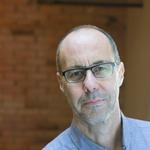“Indigenous peoples are the sickest population in Canada. Many of the health problems we see today in Indigenous communities — from high rates of diabetes to dysfunctional families and suicide — can be traced back to residential schools.”
– Darlene Kitty
When family physician Darlene Kitty greets her elderly patients in her hometown of Chisasibi, Que., a Cree community on the northeast coast of James Bay, she leans in, shakes hands, and gives them a kiss.
“I’m Cree, you’re supposed to kiss the Elders on both cheeks. That’s a way to connect with the patient and family. It’s something you don’t usually learn in med school, but I teach this to students here on rotation,” says Kitty, director of the Faculty of Medicine’s Indigenous Program since 2010 (see sidebar).
She says training medical students and colleagues to understand the healing power of Indigenous culture and history, which can complement Western medicine, is key to reconciliation — a prescription for healthier Indigenous communities.
“Indigenous peoples are the sickest population in Canada. Many of the health problems we see today in Indigenous communities — from high rates of diabetes to dysfunctional families and suicide — can be traced back to residential schools,” she says.
Kitty spends several days a month at the University of Ottawa leading the Indigenous Program and devotes most of her time as a family physician and the clinical representative on the Cree Board of Health and Social Services of James Bay, where she also serves on the research committee.
As a clinician-educator and administrator committed to improving Indigenous health in Canada, she says the recent federal Truth and Reconciliation Commission (TRC) report is an important research and medical education document.
“The TRC brings to life all these survivor stories, and I think this is a lot more valuable for students to learn than a research paper that’s more vague in description,” says the physician, whose parents both attended residential schools.
“My parents don’t really talk about their experience,” she adds. “I know my dad didn’t have a good experience. One of his older brothers died in residential school. They never found out why he died.”
Kitty attended high school in Kirkland Lake, Ont. “I was a science nerd,” she says with a warm laugh. She began her career as a nurse, and later attended the University of Ottawa’s Faculty of Medicine, graduating in 2002.
At the time, she was the only Indigenous student, and the four-year program dedicated only a single afternoon to Indigenous health. Today, Kitty delivers the first of a series of lectures and events linking Indigenous culture and health to all of the Faculty’s 165 first-year students in the initial week of med school.
Founded in 2005, the Indigenous Program hosts a student-led Aboriginal Health Interest Group, which provides information to its more than 120 members on health issues affecting Indigenous populations. It also holds mini-med school sessions to inspire and empower Indigenous youth, post-secondary and mature students to choose medicine as a career and to apply to the program.
For Kitty, closing the circle of training in “cultural safety” will ideally mean that every medical student will do a rotation in an Indigenous community — and learn the proper way to greet an Elder, for instance, and see first-hand how the social determinants of health affect Indigenous peoples.

